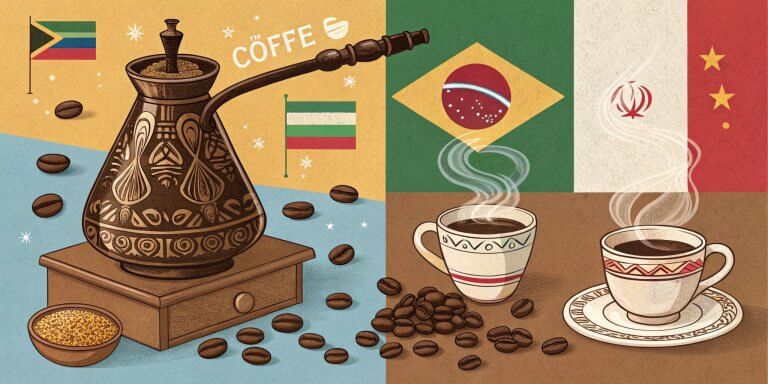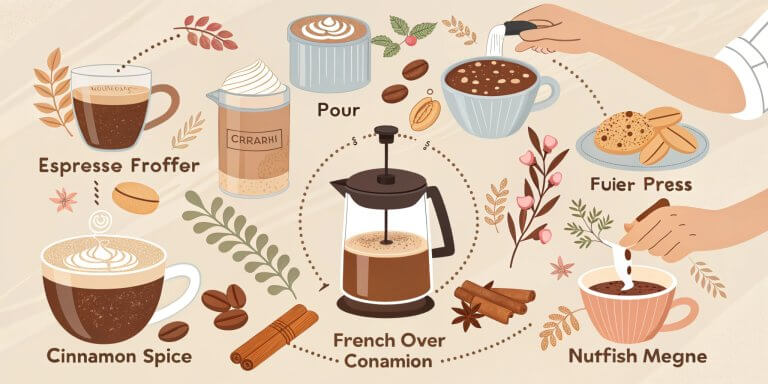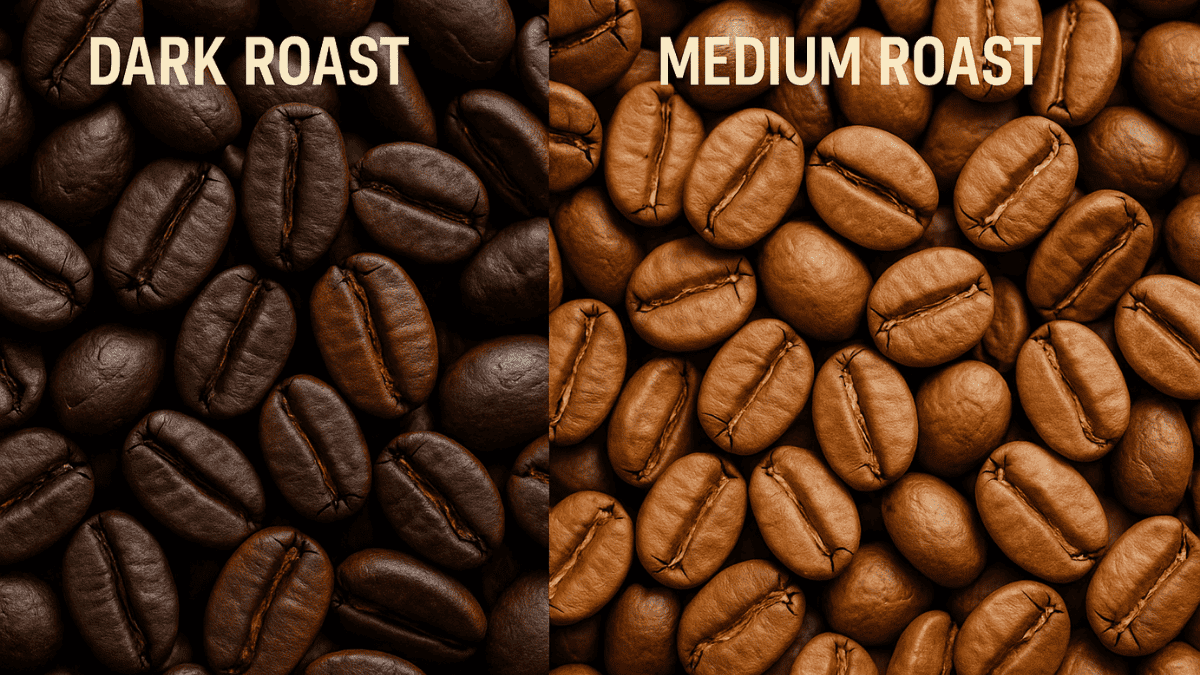
If you’ve ever wondered which roast truly deserves a spot in your kitchen cabinet, you’re not alone. In the discussion of dark roast vs medium roast, coffee enthusiasts often land firmly in one camp or the other. Some swear by the intense, chocolaty notes of dark roast coffees, while others prefer the balanced, nuanced flavor of a good medium roast. With so many opinions around, it can be tough to decide which brew best suits your taste buds, daily routine, and even your health goals.
This post will walk you through the basics of roast levels, explore aroma and flavor differences, shed light on caffeine content, and guide you toward making an informed choice about your next coffee purchase. Prepare to discover the subtle (and not-so-subtle) distinctions that can transform your morning cup into an experience you genuinely savor.
Explore roast basics
You’ve likely noticed that coffee beans come labeled in numerous ways: French Roast, City Roast, Viennese Roast, and so on. In simple terms, these categories indicate the length and degree of bean roasting. The darker the roast, the longer and hotter the beans have been exposed to heat, resulting in oils moving to the surface and a deeper color. Dark roasted beans often appear shiny or slightly oily. Medium beans tend to be lighter in appearance with little to no surface oil.
Roasting is not only about color, however. It’s also about flavor development. It’s the unique point at which the coffee bean’s internal chemistry changes, releasing certain compounds and caramelizing natural sugars. Dark roast coffees typically highlight the roast itself, meaning you’ll notice more charred, bittersweet notes. Medium roasts bring out the bean’s intrinsic qualities, such as floral, fruity, or earthy characteristics, while still offering some roasted depth. More than just a matter of color, these changes impact acidity, body, and overall mouthfeel.
There’s no single “best” roast in a universal sense, because it ultimately depends on your palate. Are you after bolder, heavier flavors reminiscent of dark chocolate, or do you like smoother flavors with hints of fruit or nuts? Before you decide, let’s dive deeper into the process that gets you from a green coffee bean to your morning cup and see what each roast level brings to the table.
Understand roast levels
Roasting coffee transforms green coffee beans into the aromatic, brown beans we recognize in stores. The roasting process typically begins with light roasts, progresses through a medium range, and continues until the beans reach a dark level. While there are myriad nuanced sub-levels, each primary category typically aligns with specific flavor traits.
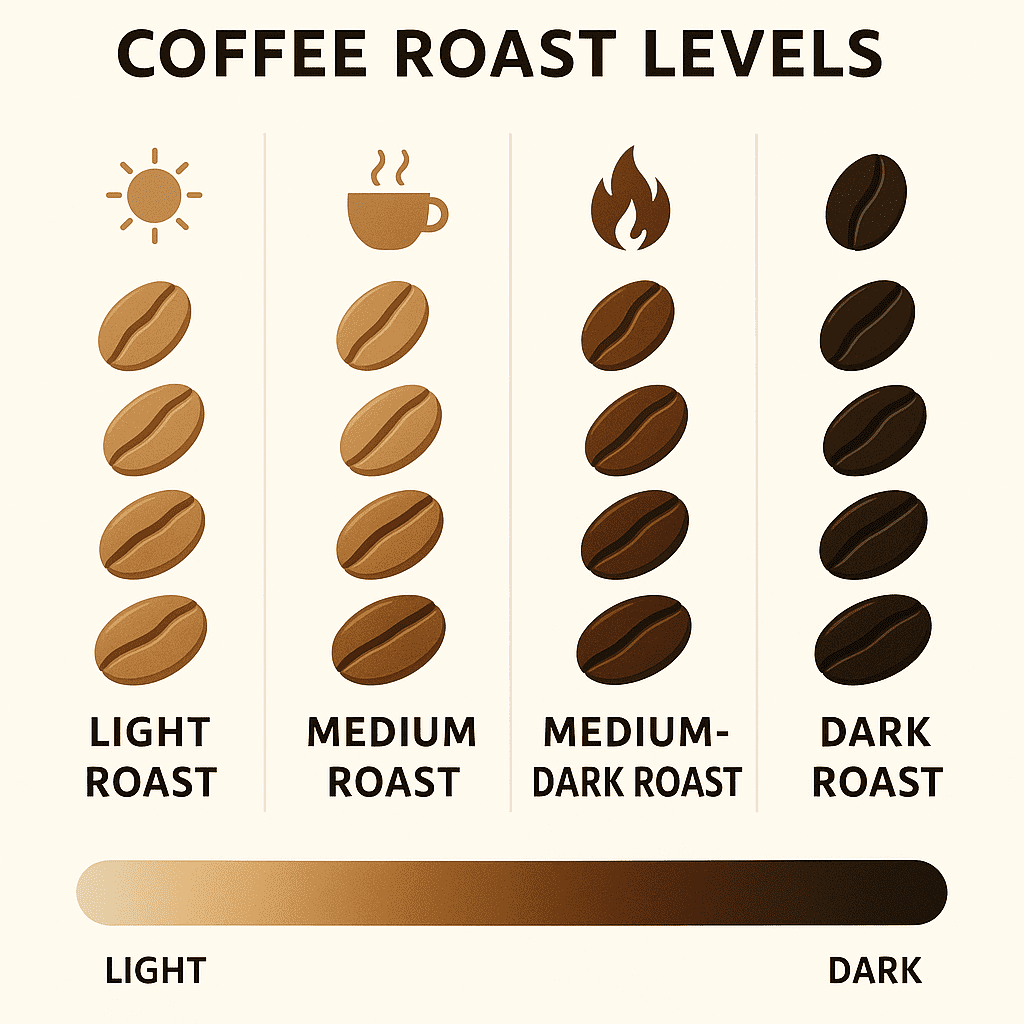
Coffee roast level gradient showcasing light, medium, dark
First crack and second crack
Light roasts are usually pulled after or near the first crack. Medium roasts roast a bit longer, capturing a balance between the original bean flavor and the roast’s influence. Dark roasts extend to or past the second crack, developing a more robust, toasty flavor.
Identifying each roast
When you’re specifically weighing dark roast vs medium roast, you’re essentially choosing between a deeper, roast-focused flavor and a balanced bean profile. Neither is wrong—it’s merely about which taste experience you prefer. This interplay of heat and time is precisely what shapes your cup’s aroma and complexity, so understanding it can help you fine-tune your coffee selection.
Taste the flavor profiles
Dark and medium roasts develop distinctly different taste profiles, and this is often where people “fall in love” with one style over another. On the surface, you might think all coffee tastes similar, but once you start paying attention to flavor notes, aroma, and mouthfeel, you’ll discover just how varied coffee can be.
Dark roast flavor notes
Dark roast coffees shine if you appreciate:
Dark roasts can sometimes taste more uniform because the roast itself tends to dominate. That’s why two different dark-roasted origins might taste more similar than a lightly roasted bean from Colombia vs one from Ethiopia. The roast can sometimes mask subtle varietal distinctions, though many coffee lovers thrive on dark roasts’ intense flavors.
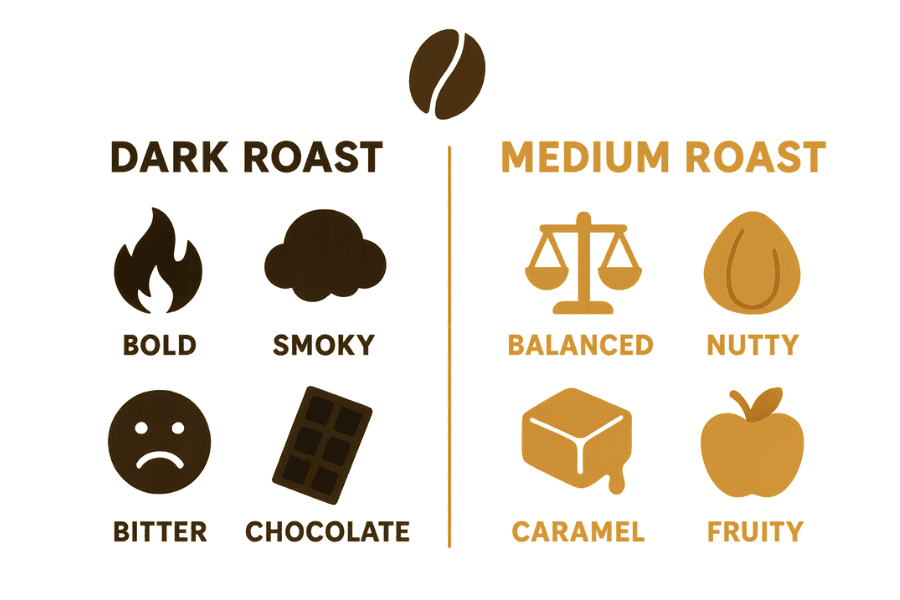
Flavor profile differences for dark and medium roasts
Medium roast flavor notes
On the other hand, medium roasts often appeal to those who crave:
Thanks to this balance, a premium medium roast can let you detect complex flavors that originate from the coffee’s growing region. Whether it’s a hint of fruit or a slight floral aroma, medium roasts can keep you engaged sip after sip.
Flavor table
Below is a quick table summarizing how dark and medium roasts can differ in taste and appearance:
|
Aspect
|
Medium Roast
|
Dark Roast
|
|---|---|---|
|
Color |
Medium brown, matte finish |
Dark brown to black, oily sheen |
|
Acidity |
Moderate |
Low |
|
Body |
Medium |
Full, heavier |
|
Flavor Notes |
Balanced, origin notes + roast |
Roasty, smoky, chocolate |
|
Aromatic Profile |
Subtle nuances |
Bold, intense |
Ultimately, your choice depends on whether you crave deeper, roast-driven flavors or love nuances that highlight the bean’s origin. If you’re not entirely sure, try tasting them side by side and discover which you prefer. It’s a fun, hands-on way to learn about your palate and better understand why some folks won’t drink anything but dark roast while others insist medium is the sweet spot.
Compare caffeine content
It’s a common misconception that dark roast coffees automatically provide a higher caffeine kick. This belief might come from the intense flavor that can accompany a dark roast, leading many to assume it must contain more caffeine. The reality is a bit more nuanced. The differences in caffeine levels among roast profiles can be subtle or more noticeable depending on how you measure your coffee, especially if you measure by scoop versus weight.
By weight vs by volume
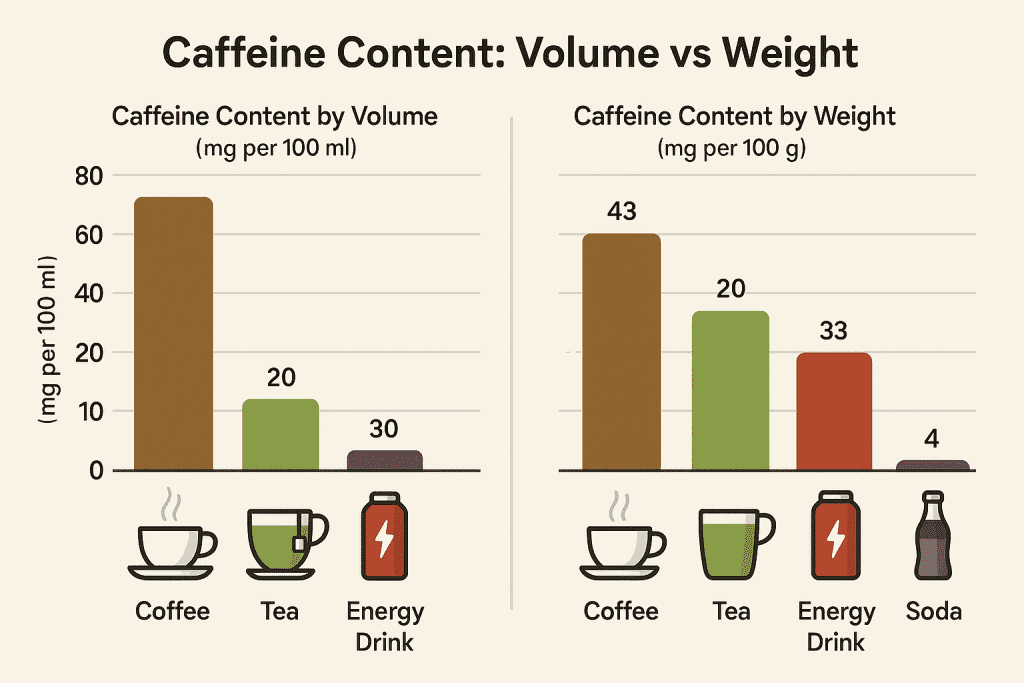
Caffeine content comparison by volume and by weight measurement
So which roast packs more punch?
In most practical home-brewing situations, the difference is minor enough that you shouldn’t choose your roast solely based on caffeine. Dark roast vs medium roast, in terms of caffeine, might be close to a tie. Your tolerance, the amount of coffee you drink, and how you brew it have more influence on your energy boost than the roast level itself. Espresso might have less caffeine per cup than a larger mug of drip coffee, despite having a strong flavor. So, if you’re worried about waking up, consider paying as much attention to the brewing style and coffee-to-water ratio as you do to roast.
Note the health factors
Coffee, regardless of roast level, can be part of a healthy lifestyle when consumed in moderation. Studies have indicated potential benefits, including improved mental alertness and possible protective effects against certain chronic diseases. However, there are slight differences to consider when you’re deciding whether to lean toward dark or medium roasts.
Antioxidants
All coffee contains antioxidants, which may help reduce inflammation in your body. Dark roasts sometimes show a slight advantage in terms of having certain antioxidant compounds formed during the roasting process, particularly compounds like melanoidin. Medium roasts retain some beneficial antioxidants that originate in the green bean itself. Although the difference is typically small, individuals who emphasize maximizing antioxidants in their diet often lean toward medium or dark roasts for that reason.
Acidity and your stomach
If you’re prone to heartburn or acid reflux, you might wonder if medium roasts are more acidic and thus harder on your stomach. While darker roasts usually show lower acidity in taste, the link between taste acidity and actual impact on stomach pH isn’t always straightforward. Some coffee drinkers with sensitive stomachs do find that darker roasts are gentler. However, others don’t notice a difference, and some medium roasts can even feel smoother depending on the origin or roast method. If you have ongoing stomach issues, you might want to experiment with different roasts and see which one you handle better.
Possible acrylamide concerns
During the roasting process, a chemical called acrylamide can be formed. It’s not exclusive to coffee—this compound also appears when starchy foods are fried, baked, or roasted. Light and medium roasts can hold slightly higher levels of acrylamide than darker roasts because prolonged heat breaks down acrylamide over time. That said, coffee’s acrylamide levels are usually low enough that moderate consumption isn’t considered a significant health risk. If this is a concern for you, discussing it with a healthcare provider can help clarify any dietary changes you might need.
Overall, both dark and medium roasts can be part of a balanced diet. If you’re integrating coffee into a health-conscious lifestyle, focus on the big picture: limit extra sugar and high-calorie creamers, stay hydrated, and stick to moderate amounts of caffeine. The roast level itself is less important than the sum of your overall diet and coffee habits.
Consider brewing methods
You might not realize how much your brewing method can influence the outcome of dark roast coffees vs their medium counterparts. Even the best beans can lose their magic if they’re brewed poorly. Each method of extracting coffee affects flavor, acidity, and strength in distinct ways.
Drip coffee
Drip brewing is the workhorse in many homes. When using a typical drip coffeemaker, medium and dark roasts can both work well. Medium roasts can shine as they highlight bright notes that come through in the steady drip extraction. Dark roasts often produce a bold, consistent flavor that pairs nicely with cream or sugar if that’s your preference.
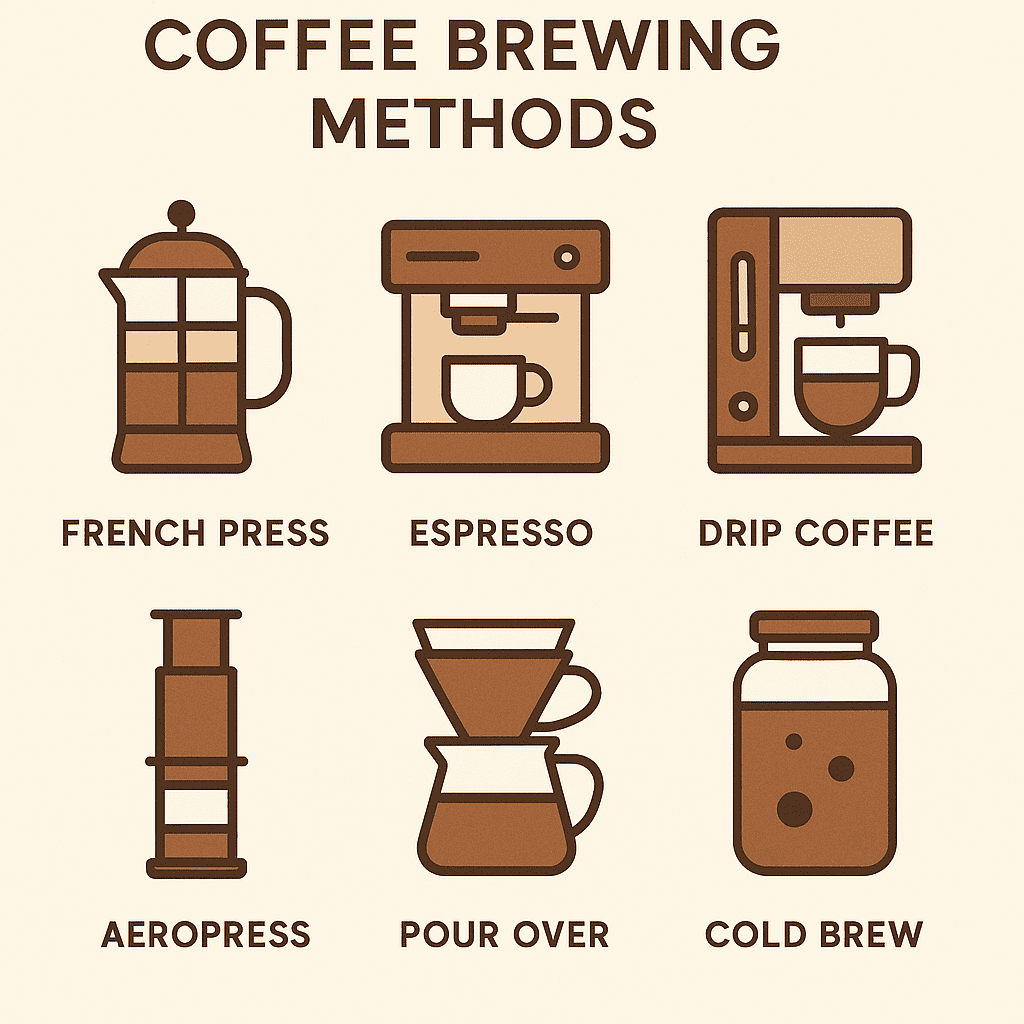
Comparison of coffee brewing methods
Pour-over
If you enjoy a pour-over method like a Hario V60 or Chemex, you’ll likely taste more nuanced flavors. Medium roasts can be excellent here, because their subtle fruit and nut characteristics come to life when carefully controlled water flow and temperature highlight every layer. Dark roasts also taste good in a pour-over if you like a richer body, but be aware that it can intensify bitterness if you let the water extract for too long.
French press
The French press is known for producing a fuller-bodied coffee. Many dark roast enthusiasts love the French press method because it extracts more oils from the beans, leading to a robust, sometimes almost syrupy brew. However, a well-chosen medium roast can also be fantastic in a French press, yielding a balanced cup with a smooth finish. It depends on your preference for bolder or more delicate flavors.
Espresso machines
Espresso calls for a fine grind and pressurized extraction, typically amplifying the flavor of the roast you use. In many cafes, you’ll find darker roasts used for espresso-based drinks because they offer a strong flavor backbone that cuts through milk in lattes or cappuccinos. Medium roasts, however, can create a craft-like espresso that highlights sweet, citrusy notes. The choice might hinge on how you enjoy your espresso—short and black, or mixed into milk-based drinks.
When you’re experimenting at home, feel free to switch up not just your beans but also how you brew them. You might find that a medium roast is perfect in a pour-over to highlight complex notes, but that you can’t live without a dark roast in your latte. The possibilities are endless, so don’t be afraid to play around.
Store beans properly
No matter which roast you pick, you’ll want to keep those beans fresh to preserve their best flavors. Oxygen, moisture, heat, and light can all degrade coffee faster than you might think. Proper storage helps you make the most of your investment in good beans, whether they’re medium or dark.
Storage basics
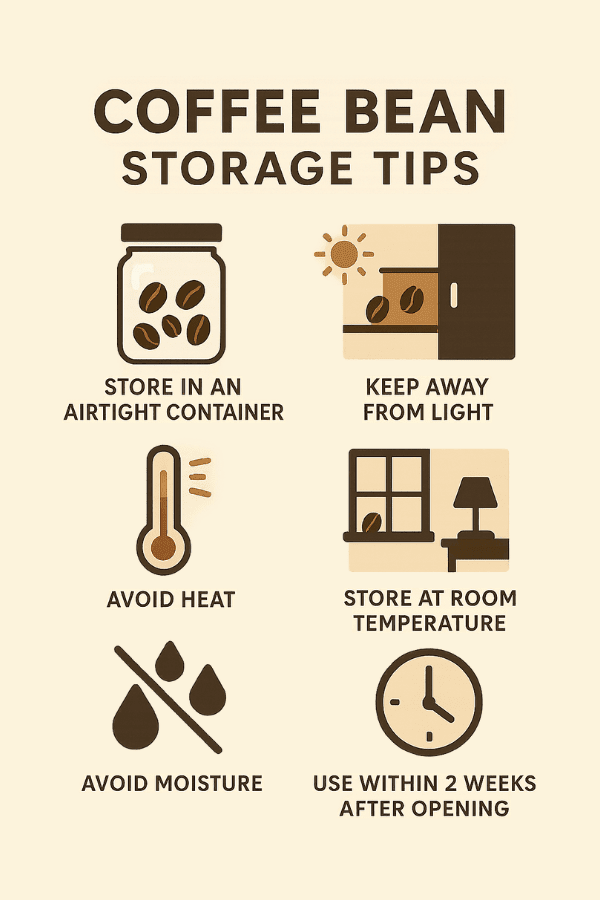
Best practices for storing coffee beans
Roast-specific considerations
Proper storage might seem like an extra step, but it truly matters. Even if you buy top-quality beans, letting them sit in a poorly sealed bag on your counter can dampen their taste. Think of it as safeguarding the fresh, nuanced characteristics you paid for.
Find your perfect match
With so many elements to consider, you might wonder how to figure out which roast level is best for you. The process can be surprisingly fun—and delicious. Most coffee lovers refine their preferences by tasting. Comparing dark roast coffees with medium varieties side by side can teach you a lot about your palate.
Tasting tips
The great news is there’s no shortage of options. If you adore smoky intensity, head for the darker side. If you crave brightness and complexity, medium might be your go-to. Or perhaps you’ll find that you appreciate both styles, depending on your mood or method. Some java fans keep both types on hand—dark for a robust afternoon pick-me-up, medium for a leisurely morning sip.
Summarize key points
When it comes to dark roast vs medium roast, you’re dealing with a spectrum of flavors and experiences. Both styles can yield a satisfying cup, but each brings unique characteristics to the table.
Ultimately, your decision might hinge on personal taste, brewing style, and any health considerations you have. Coffee is individual, like picking a favorite music or a signature scent. Your best bet is to experiment. Grab a bag of each roast, explore different brewing techniques, and taste your way toward the blend that truly satisfies you. Coffee is as much about enjoyment as it is about a jolt of energy, so pick the roast that makes your mornings (or late nights) feel just right.

